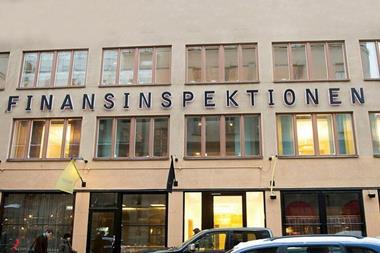DENMARK: strong demand for office and retail
In spite of the weak occupational markets, real estate investment activity in Denmark was strong last year. Total annual office investment volumes during 2003 are estimated to have amounted to e2.1bn. Investor demand was strong for fully-let office buildings in prime locations. In addition to offices, retail properties in good areas were also especially in demand.
Although Danish pension funds were less active as buyers in 2003, international investors, predominantly the German funds, have concluded a number of large transactions. DEKA for instance purchased a 13,000 square? metre office building in the North Harbour and CGI acquired a 50% stake in the Fields shopping centre in Ørestaden. In October 2003, Merrill Lynch Global Principal Investments announced that it had acquired 80% of Illum, a 26,000 square? metre GLA shopping centre on the Copenhagen high street, for e119m.
The largest deal in 2003–04 what period of_2004? was the e435m sale of Nordea’s office, retail and residential portfolio in three separate transactions to PKA and a consortium of Danish pension funds, respectively.
We expect the investment market to remain active in 2004 with the office sector becoming increasingly attractive given the lower expected vacancy rates and improved economic outlook. Despite the prospect of future rental growth, investors are likely to remain reluctant about residential investments, as the yields are very low. Strict planning laws and rising personal incomes are expected to keep retail investments in strong demand.
The industrial sector in the Copenhagen region constitutes 14m square metres, with a vacancy of about 2%. The vacancy rate for industrial premises is highest in the suburbs that feature a large concentration of older premises of poor standard. The increasing vacancy among the older premises is expected to grow slightly in the next two quarters. When the economic recovery sets in, the industrial property sector is expected to lag behind, as current vacant properties need refurbishment and developing new buildings seems like a cheaper alternative.
The investment market for industrial properties is traditionally dominated by owner-occupiers. The market is illiquid and attracts no interest from institutional investors. Some international players are looking to enter the market.
The retail sector experienced a significant growth in 2003. This growth is expected to continue throughout 2004. The vacancy rate is stable at 1.8% for central Copenhagen and 1% for the greater Copenhagen region. In spite of the increase in lettable area in the retail sector, the vacancy rate is not expected to increase significantly during the new two quarters. The sector faces an increasing interest from foreign investors and tax-driven limited partnerships.
Retail is one of the most interesting investment opportunities in Denmark at the moment. With the increasing private consumption and the improving economy, retail tenancies are in high demand. High street locations in Copenhagen are very popular. The retail rent is also expected to increasebecause new retail stock to be constructed in the coming years is highly limited by legislation.
Another appealing investment opportunity is residential premises with a central location in Copenhagen. Plenty of new residential premises are under development in and around central Copenhagen but some cannot boast a location desirable enough to attract enough tenants. Most essential for the tenants is location, infrastructure, and surrounding activities such as shopping, restaurants, cafés etc. Since many of the older residential buildings benefit from very central locations in highly popular neighbourhoods, investment in the existing residential stock also provides a high return.
Alessandro Bronda is head of European research at Catella European Research in Brussels
FINLAND: RAPID DEVELOPMENT ATTRACTS NEW INVESTORS
In terms of internationalisation, the Finnish real estate market has undergone rapid development in the past few years. The previously domestic market has turned out to be an interesting and transparent business environment for both international investors and service providers. In almost every significant recent transaction there have been international players involved at some stage of the bidding process. Examples of realised transactions include the sales of Polar Real Estate to German IVG and Nordisk Renting to the Royal Bank of Scotland. A large proportion of Citycon’s shares were also sold to a group of foreign investors. The latest foreign transaction was the purchase of Nordea bank’s portfolio of 38 Finnish properties by IXIS AEW Europe, and the deal of the rest of the bank’s portfolio is expected to be announced in the nearest future.
The attraction of the real estate market is backed by the competitiveness of the Finnish economy. The growth of GDP is forecast to continue exceeding the EU average by a clear margin in the following years. Furthermore, Finland’s position as the only Nordic member of the Euro-zone has strengthened its attractiveness.
The strongest property sector is retail, especially high street and shopping centres. Because of strong private consumption, retail rents have remained stable and vacancies are at a very low level.
As in many other markets, Finnish office rents have reacted to softening demand and vacancies have risen in many submarkets. However, because of the positive market fundamentals, especially in Helsinki CBD, the overall fall has been much less severe than in many other major European markets. The combination of modest drop in rents, lower vacancies and higher yields creates a sound base for investment demand.
As a result of recent international development, the Finnish property industry is discussing the need for a tax-transparent listed property investment vehicle in Finland. The government has taken a positive view for these so-called FinnREITs and is reviewing the possibilities for the new legislation, hopefully being in place in 2005.
The presence of international investors and occupiers has also attracted global real estate service providers to the market. As a primary motive for entry, the service companies have most commonly disclosed their desire to serve their international clients interested in the Finnish market. One example is that IXIS recently appointed Aberdeen Property Investors to manage its property portfolios in Finland and Sweden. The assignment comprises asset management, transactions, project co-ordination and property management.
Olli Olkkonen is managing director and Hanna Kaleva is director, research services, at KTI Property Information in Helsinki
NORWAY: OFFICE SECTOR SUFFERS FROM SOARING VACANCIEs
Although the Norwegian economy is small and relatively insular, with competition lacking in certain sectors, fiscal and monetary policy stimuli, supported by stronger investment in the offshore oil and gas sector, virtually ensure a strong recovery in GDP growth. International competitiveness will also improve in response to krone depreciation and a favourable incomes policy agreement aimed at reducing wage growth. Private consumption, which has exceeded 3% in each of the past two years, could even reach 4% in 2004.
Despite this relatively optimistic outlook, Oslo is not considered as advantageous as other regions of Europe. The capital tends to be less competitive than its Scandinavian neighbours, with a relatively small financial sector. Investors are also faced with an overly-bureaucratic and fragmented planning process. High-profile job cuts, such as those at SAS, continue to affect the regional economy, while government acceptance of a merger between two of the country’s largest holding companies and banks, DnB and Gjensidige, does not augur well for employment growth in financial services.
While the office sector has experienced soaring vacancy rates the retail sector has enjoyed a stable demand for space. Shopping centres continue to outperform in growth. Consumer spending is strong, and is expected to remain strong in the foreseeable future.
Shopping centres’ strong growth has led to large investments in the sector, which is dominated by a few major players. This has left little space for new players as barriers to entry become increasingly high. The sector is highly consolidated. The major operators control 50% of turnover, and havelargely been protected from competition by legislation. A special act has to a large extent excluded further development of centres in excess of 3,000 square metres.
The Norwegian market has shown little interest in industrial property for investment purposes. User and owner are in most cases the same, and few production plants re sold for further use as industrial properties. Hence we have no reliable record of prices in secondary transactions or rental levels in this sector. When any industrial property might be on the market rental prices tend to be similar to rents on warehouses and combined facilities.
Third-party logistic centres report high capacity utilisation. Their growing dominance in handling smaller to medium storage needs prevail, and this dominance again influences the level of rents.
The Oslo office market experienced a huge drop in rents in 2002 and 2003. Rent levels in the logistic sector were not been unaffected. Psychology is of importance, and we do not foresee a rebound in the logistic sector until the underlying sentiments again has stabilised.
The office market in Oslo, with a stock of around 8.5m square metres, has experienced increased letting activity since the second-half of 2003, especially for buildings in the CBD and for units below 800 square metres.
Nevertheless, overall take-up in 2003 remained weak, rental levels fell further, subletting continued and the overall vacancy rate rose from 5.2% at the end of 2001 to 11% at the beginning of 2004.
Although, in comparison to other developed countries, the Norwegian economy is less exposed to the ICT sector, this sector did have a major influence throughout 2002 in weakening Oslo’s market fundamentals. However, since summer 2003, office demand has been driven to a large extent by smaller ICT firms. In addition, the public sector also took up space in the mid-sized segment as a consequence of relocating some activities.
We expect Oslo’s overall vacancy rate to remain stable at 11% in the short term. Much of Oslo’s vacant space is increasingly composed of older stock, as developments are only constructed if they can secure tenants before completion.
The real estate investment market, which in the past suffered from low transaction volumes, saw increased activity at the top end of the market in 2003 with several larger offices in Oslo transacted. Although prime office yields fell in 2003, they remained among the highest in Western Europe. AB
SWEDEN: STOCKHOLM OFFERS CYCLICAL PLAY AS ECONOMY RECOVERS
The Swedish property market has been the most international of the Nordic property markets. This recent international interest has its roots in both institutional and cyclical factors. The institutional factors are important prerequisites and include factors such as the larger size of the Swedish market, a high level of liquidity, a high degree of transparency in the market, a legal framework fitting the needs of international investors and a well developed advisory industry. These institutional factors alone could not, however, explain the high level of international interest. The short lease structure of the Swedish market, the transparency and pricing efficiency forced on the market by the SFI/IPD index and the sharp decline in tenant demand despite the relative mild economic downturn in Sweden, have put Sweden in the front of the pricing cycle.
As Stockholm, by far the largest Swedish market, has been the hardest hit by the economic slowdown, office capital values have also been the hardest hit in the capital. As the prospects for the Swedish economy are improving, this makes the Stockholm market the most interesting cyclical play in Sweden. The issue is rather when the market bottoms out, as there is a lag between economic activity and rental growth. As Sweden has one of the better economic outlooks in the medium term, it is expected that the Swedish office market is better positioned than many other European office markets.
The office markets in the second tier cities have been less affected by the past year’s economic development, and are poised to generate stable returns.
Retail sector capital values have also been relatively unaffected by the economic slowdown, a development which has been underpinned by strong consumer demand. The outlook for the retail sector remains positive, although there will be significant variations due to local tax-increases.
Jon Lekander is head of portfolio strategy at Aberdeen Property Investors Nordic












No comments yet